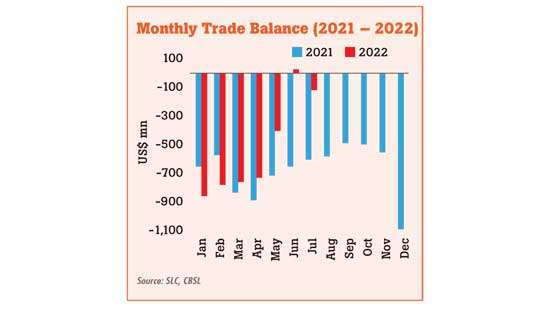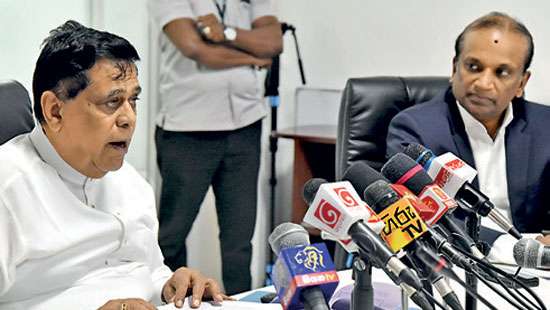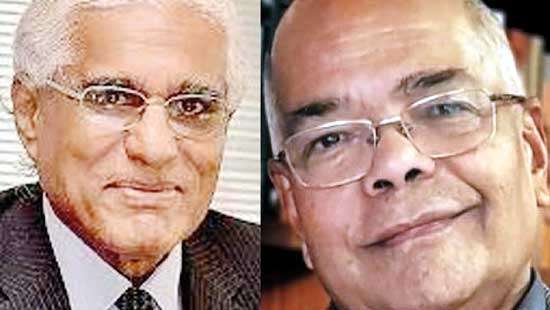Business Main
Inflation nightmare could stay through 2023 even if things turn out as planned
27 Sep 2022
 5
5
Sri Lankans could be in for a long drawn-out path out of the economic misery that they have dug themselves into, as the prevailing cost of living crisis could grind on for years with inflation staying higher than the pre-crisis level, even after a year from now, that also if things turn out according to the forecasters’ expectations.
Growing stock of decent jobs must be an important development priority for SL
24 Sep 2022
 1
1
One of Sri Lanka’s most important development priorities must be to grow its stock of decent jobs and ensure inclusive access to them, particularly by women and young people, the International Labour Organisation (ILO) said.
SL to officially present IMF deal, debt restructuring plans to creditors tomorrow
22 Sep 2022
 10
10
Sri Lanka will present its programme agreed with the International Monetary Fund (IMF) to its official and private creditors tomorrow for the first time, seeking debt relief, as the US $ 81 billion crisis-hit economy seeks to turnaround its fortunes.
Construction shrinks twice as much as economy in 2Q
20 Sep 2022
 2
2
While the broader economy contracted by 8.4 percent in the second quarter ended in June, the construction activities, which contributed an outsize 9.5 percent to the overall economic output, shrank by nearly twice as much as in the same period, indicating its importance to the Sri Lankan economy, specially in the post-war era.
GDP shrinks 8.4% in 2Q amid economic and political turmoil
16 Sep 2022
 1
1
Sri Lanka’s Gross Domestic Product (GDP) contracted the most in two years in the quarter ended June (2Q22), the first full quarter since the country plunged into a deep economic crisis followed by social and political upheaval, which disrupted most of the economic activities amid widespread shortages and soaring prices.
Calls growing to remove VAT exemptions for equitable tax system
15 Sep 2022
 0
0
As the country’s tax system is undergoing a complete overhaul to ensure that the government raises adequate revenues to ensure its fiscal deficits are kept at a sustainable level, the financial and tax experts are calling for the removal of a wide range of exemptions from the Value Added Tax (VAT), which is deemed as a distortion.
CB turns net buyer of forex after 11 months
13 Sep 2022
 0
0
In what appears to be another notable development in the space of external sector advances made as of late, the Central Bank had become a net absorber of foreign exchange after being a net seller for eleven consecutive months since the country started facing foreign exchange shortages since the back half of last year.
ADB to disburse US $ 203mn emergency loan to support SL’s poor and vulnerable
10 Sep 2022
 11
11
Sri Lanka will receive an emergency assistance loan amounting to US $ 203 million from the Asian Development Bank (ADB) to ensure the poor and vulnerable, especially women and children, have access to food and have their livelihoods protected.
Govt. urged to steer clear of haircut on rupee debt
09 Sep 2022
 10
10
As Sri Lanka is in the midst of securing fund disbursement from the International Monetary Fund (IMF) to bail out the crisis-struck economy, all measures must be taken to avoid a haircut, particularly on the country’s domestic debt, so that long-lasting negative impacts on the economy can be evaded.
Govt. installs new system to identify those who deserve welfare benefits
06 Sep 2022
 10
10
The government has deployed a new welfare benefit information system from next year onwards to provide better targeted social welfare benefits by way of direct cash transfers to the vulnerable groups in society.
IMF tells Sri Lanka to work “expeditiously” to gain debt relief from creditors
02 Sep 2022
 9
9
The International Monetary Fund (IMF) yesterday said Sri Lanka should move forward “expeditiously” to secure debt relief from its creditors to ensure debt sustainability as disbursement of any IMF financing is contingent upon that and the reforms carried out by the authorities to restore macroeconomic stability.
CB Governor gives thumbs up for RW’s interim budget
01 Sep 2022
 0
0
Central Bank Governor Dr. Nandalal Weerasinghe expressed confidence in the overall macro programme and structural reforms on the national economy getting on track going forward, as the interim budget presented on Tuesday (30) is the basis of the foundation of those efforts.
Government announces road map to save SriLankan Airlines from crashing
30 Aug 2022
 0
0
With the aim to rescue SriLankan Airlines (SLA) from a looming collapse due to its heavy debt stock, the government is planning to sell up to a 49 percent stake of two profitable units of the airline, with management transfers, in order to restructure the national carrier with a possible local or foreign partner.
IMF rescue package could take six months after staff-level agreement
29 Aug 2022
 7
7
After reaching a staff-level agreement, the full approval for the envisaged International Monetary Fund (IMF) Extended Fund Facility (EFF) arrangement could take about six months considering challenges in the negotiations process with the country’s external creditors, particularly China, according to experts.
Rooftop solar sector demands substantial tariff hike
26 Aug 2022
 13
13
Sri Lanka’s Solar Industries Association (SIA) yesterday urged the government to immediately grant a substantial hike in feed-in tariffs (FIT) for rooftop solar producers in line with the recent increase in input costs in order to revitalise rooftop solar production and to ensure the country’s energy security without burdening electricity consumers further by increasing electricity tariffs.
Asia and Pacific will struggle more than before to escape poverty: ADB
25 Aug 2022
 0
0
Several nations in Asia and the Pacific would struggle more than before to escape poverty, as the outbreak of the COVID-19 pandemic has created a setback of about two years, a report by the Asian Development Bank (ADB) said.

Moody’s raises Sri Lanka’s rating
25 Aug 2022
 0
0

ASPI crosses the 15,000 mark for the first time
25 Aug 2022
 0
0

SL exits ’Restricted Default’ rating
25 Aug 2022
 0
0

Moody’s raises Sri Lanka’s rating
25 Aug 2022
 0
0

Probe underway as child dies after surgery at J’Pura hospital
25 Aug 2022
 0
0

Over 370 jumbos perish in 2024
25 Aug 2022
 0
0
































